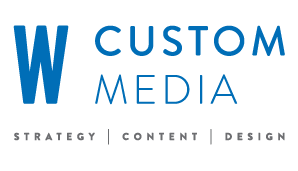
Recent research shows that search is the biggest contributor to web traffic, with over 60% of visits coming from search engines. This means that search engine optimization should be a key focus in your content marketing strategy. Understanding SEO basics can dramatically boost your online performance, so follow along as we break down how to make search work for you.
Keywords
As we mentioned in our article on writing digital headlines, it is important to remember when framing your content for searchability and clickability that you are targeting both search engine technologies and the people who use them. To start, let’s focus on the search engine part. The most common piece of advice for getting noticed via search seems to be to use keywords. Keywords are the terms that define your content. If you had to boil down what your page is conveying, what handful of words would you use? Make sure those words appear on the page, in the headline, in the URL, and in the meta description and title. And don’t forget about images–using visuals is a great way to keep readers engaged once they find your page, but make sure you are also giving them titles and alt tags for Google indexing
We’ve said it before and we’ll say it again, using trending words may help your content in Google rankings, but you still need humans to choose your page. Don’t simply make your headings and descriptions keyword salads. Using terms that accurately describe your content–and, with 65% of traffic coming from mobile devices, ensuring your site is mobile friendly–helps reduce the ‘bounce’ rate, or the frequency with which people leave the page before looking at everything on it, which in turn improves your discoverability. With good, relevant content directed at a clear audience, it’s easy to implement keywords that will reflect and amplify your message.
User Intent
To take this one step further, let’s consider user intent. You want search engines to show your content in their results, but if you are using keywords and descriptions that do not match what people are really looking for, you won’t see much engagement. User intent, the user’s goal when searching, goes beyond matching accurate keywords to your content. For example, when someone searches for a product, let’s say car tires, are they looking to purchase tires, do they want an article comparing tires, or do they want directions or reviews for nearby mechanics? Make sure you are targeting the right audience and providing the answer they are looking for. You can see what Google thinks your audience is looking for–and thus what will be most easily discovered by users–by searching for terms relevant to your brand and noting the results.
Link to More
Once a search engine has suggested your page and a user has started exploring its content, how do you get them to see more of your work? Create entry points for your audience to discover more of your content by linking to other articles, posts, products, etc. on your site. For this article, readers are likely interested in digital content marketing and may find our post on digital headlines helpful, so we linked to that page in this post. This way, users can learn more about your brand and drive even more traffic across your site. You can, and should, track how site engagement changes as you implement SEO strategies and continue refining your approach.
Above all… start with good content. Engaging with audiences, making your site and content visible through search engines and friendly for mobile users, linking to more of your content–it all starts with knowing your audience and creating solutions that are useful, valuable, and impactful.
